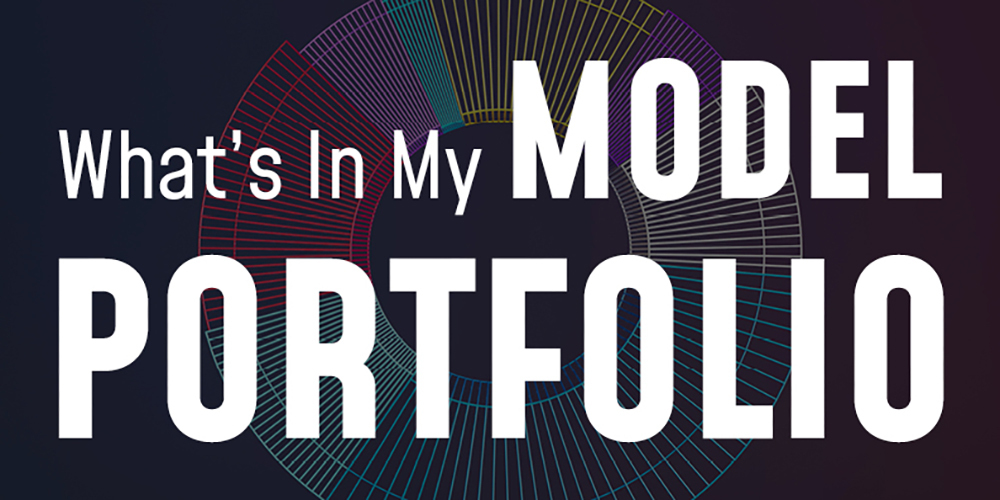Veris Wealth Partners was founded in 2007 when five financial services executives came together to create a registered investment advisor with the mission of using capital markets to drive change. The founders developed a culture and investment philosophy around “an equitable, just and sustainable world through capital markets,” said Roraj Pradhananga, recently appointed co-CIO of Veris Wealth Partners.
Pradhananga has been tasked with sourcing, due diligence and monitoring of investments across asset classes, as well as impact measurement and management at the $2.03 billion RIA. He chairs the firm’s Diversity, Equity, Inclusion and Belonging Committee and Investment Working Group.
He employs the firm’s DEIB due diligence framework, used to identify and invest in fund managers that are diverse and inclusive at all levels of the organization, a process publicly available through Veris’s website.
 Pradhananga recently provided a look inside some of Veris’s model portfolios, how the firm incorporates ESG and impact investing, how he tracks and measures ESG, and the firm’s manager due diligence process.
Pradhananga recently provided a look inside some of Veris’s model portfolios, how the firm incorporates ESG and impact investing, how he tracks and measures ESG, and the firm’s manager due diligence process.
This interview has been edited for style, length and clarity.
WealthManagement.com: What’s in your model portfolio?
Roraj Pradhananga: Within public equities, we are trying to construct portfolios that have a passive-active mix.
The active managers usually have high-active shares. We aim to be neutral, to benchmark, whether it’s size, style, region, or sector, as much as possible in model portfolios.
Our allocation to giant cap stocks is around 40% to 44%. For large cap, we are very aligned to the benchmark, at 33% to 34%. The mid-cap allocation is around 16% to 17%, and small-cap around 4% to 5%. There is a very small allocation to micro-cap. We try to construct portfolios that are more core, rather than having any growth or value bias.
We do have a small allocation to growth. And all our model portfolios have a thematic strategy, given our views around the climate solutions, race and gender equity. We do have a small 5% allocation to a thematic strategy in that equities allocation. We have four major themes we look at: climate solutions and the environment, racial and gender equity, community wealth building, and sustainable and regenerative agriculture.
Given our focus on racial and gender equity, when we identify managers and strategies for our platform, we look at what we call our “equity diversity inclusion framework” that helps us identify managers that are not only diverse, but also incorporating EDI in their investment lens, to either shareholder engagement, or proxy voting, or filing shareholder resolutions.
WM.com: What does the fixed income portfolio look like?
RP: The fixed-income portfolio is mostly active. We mostly use SMAs in the fixed income portfolio, given our client base and the customization that comes with our thematic approach.
If you look at the yield curve, if you look at where rates are today, we pretty much focus on the intermediate duration within portfolios.
We have a smaller allocation to a short duration, to focus on the spending needs of the clients. We allocate about 6 months of spending in cash or cash-like.
And then, similar to our equities allocation, we also have a thematic play here, at 10% of the fixed income portfolio, focused on community wealth building, and access to capital on mortgages, etc..
WM.com: Do you allocate to private investments and alternatives? If so, what segments do you like?
RP: We do invest across private markets. Where we have found compelling opportunities, given our impact investing approach, are on venture capital, private equity, private debt and real assets. Within real assets, we allocate to real estate, sustainable forestry and farmland.
We don't do hedge funds, and we don’t do commodities. With the short-term nature of hedge funds and alignment with ESG and impact, we just haven’t found a compelling opportunity there. Given the negative impact on communities, the climate around biodiversity, etc., we haven't found any opportunities in commodities.
WM.com: Have you made any big allocation changes in the last six months or a year?
RP: As we look at valuations of domestic markets, we have provided our advisors the ability to lower that rating to U.S. markets, and increase to international developed, and emerging markets.
WM.com: ESG and impact investing is a big focus for Veris. What does the firm offer in terms of impact investing?
RP: We have model portfolios, but we also build very customized portfolios for our clients. The way we go about doing that is by trying to understand what are their financial objectives and what are their impact objectives. And that helps guide our portfolio construction process.
Our investment philosophy is based on the belief that investors can have both positive social and environmental impacts across asset classes while generating risk-adjusted returns for that particular asset class. We believe that integrating material ESG factors in portfolio decision-making and security selection can help mitigate risk and also have opportunities in portfolios. We are looking for companies and managers that are integrating ESG in companies, talking about how are they integrating ESG in their strategy, long-term strategy, and business practices. And investment managers, how are they incorporating ESG factors in the decision-making?
As we build and construct our asset allocation models and portfolios, we are also incorporating that into our decision-making by identifying managers that are best in class when it comes to implementation of ESG integration in the process, also shareholder engagement, proxy voting in terms of ESG guidelines, and also filing or sponsoring shareholder resolutions. That is our theory of change in public markets.
Also, we believe that diverse teams provide very different and diverse perspectives on risk and opportunities, and that can improve outcomes. So we are looking for diverse managers on our platform.
WM.com: What do you use for ESG and impact investing data?
RP: There are some really big major players that collect data from publicly listed companies around ESG, such as MSCI and Sustainalytics. They have a very strong database, and a lot of the managers we work with utilize those large data providers.
But a lot of the managers also have internal teams that collect data, especially on the active management side, that do bottom-up analysis on ESG factors that collect data through conversations with companies or other players in the industry. It is a hybrid approach there, in terms of public markets.
Are we perfect in a perfect world, in terms of ESG data? No. But especially as we look at our European counterparts, they are far ahead in terms of regulations on ESG data. The SEC recently passed climate disclosure rules that would've standardized data around scope one and two emissions. Of course, it is on pause right now, given the legal challenges of the lawsuits. But some large companies are already reporting a lot of the ESG data. Some of the small caps and mid-caps are also reporting it. It's just more of a standardization, in terms of who exactly should be reporting it, and how they should be reporting it, and if they should be audited, for example. And this is where, I think, we are making progress. We are not where we need to be, but data is getting better.
On the private market side, it's still very voluntary.
WM.com: What's your due diligence process for choosing managers?
RP: Our due diligence process is very rigorous, disciplined, and intentional, especially because of our approach. We are identifying managers and strategies that meet both the financial and impact goals of our clients. And we are long-term investors, so that guides our funnel.
In terms of sourcing, across asset classes, we are utilizing tools like Morningstar Direct, and similar tools out there. But we also get a lot of inbound requests. We have been in the industry since 2007. Our founders have been in the industry since the '90s. So in terms of ESG and impact investing, we have built a reputation.
We are also on the circuit a lot at impact investing events. We meet a lot of managers that way. We look at both quantitative and qualitative factors, both from a financial and ESG perspective, to narrow down that initial pipeline.
To find diverse managers, we have evolved what we call our equity, diversity, inclusion manager due diligence framework. That is publicly available. We are not calling it proprietary, because we think more firms need to look at it with that lens.
But there are also plenty of other collectives—the Due Diligence 2.0 Commitment, 2X Global.
WM.com: Do you use direct indexing? If so, why? Do you use an asset manager or tech provider for that?
RP: Yes, unfortunately, I cannot divulge the name of the asset manager we use. We've been involved with them since the early days of Veris, even on the advisory board when they were a small firm, and now they're a very sizable asset manager.
And on the public equity side, what direct indexing provides is the ability to customize client portfolios by excluding certain sectors, sub-industries or tickers. Our clients come with certain values, and we provide that opportunity.
But also then, having certain tilts, around whether it's racial and gender equity, or climate, to tilt the portfolio a certain way, while still minimizing tracking error. We try to minimize tracking error as much as possible.
Despite all these exclusions and tilts, we try to be as neutral as possible to the benchmark. Of course, not always possible.
We also provide overlay services in terms of shareholder resolutions and proxy voting, etc., with this asset manager.





